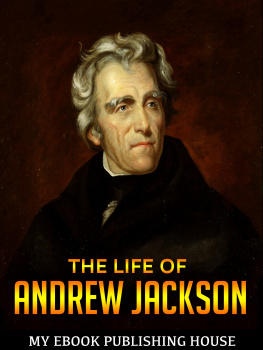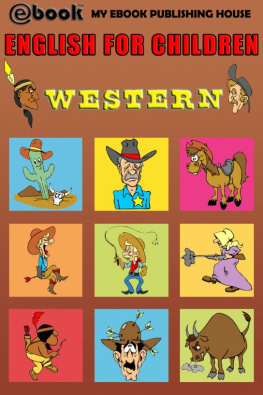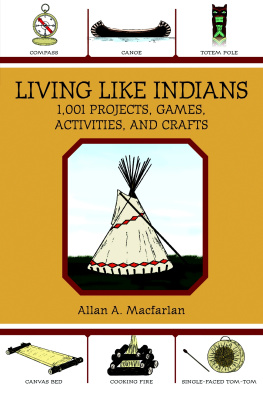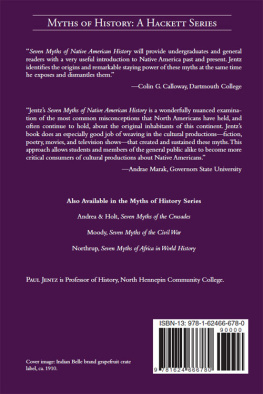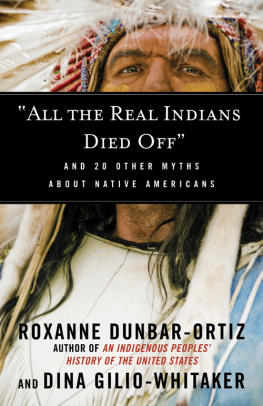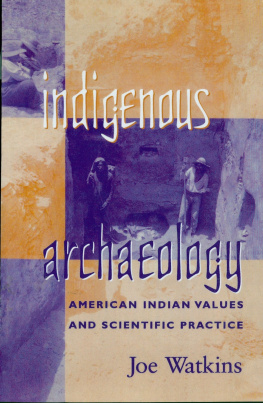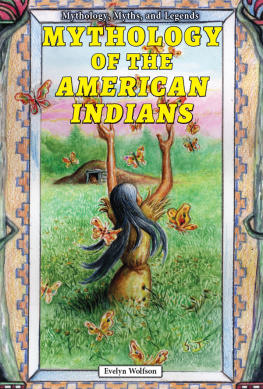The AmericanIndians
~~**~~
Published by My Ebook Publishing House
Copyright 2014 My Ebook Publishing House
License Notes
This ebook is licensed for your personalenjoyment only. This ebook may not be re-sold or given away toother people. If you would like to share this book with anotherperson, please purchase an additional copy for each recipient. Ifyoure reading this book and did not purchase it, or it was notpurchased for your use only, then please return to Smashwords.comand purchase your own copy. Thank you for respecting the hard workof this author.
~~**~~
~~**~~
Other Titles from My Ebook PublishingHouse:


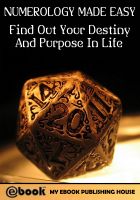
~~**~~
Table of Contents:
I. Everyday life of American Indians
The unwritten law, but respected in anycircumstances, of all Amerindian tribes, was the one of graciouslyentertaining guests and properly honoring them. At night or duringstorm, in frostiness or scorching heat, whenever, the unknowntraveler that asked for hospitality would find a place of rest,fresh water for appeasing his thirst and edibles of all categoriesthat the host had in his home. The one that violated this duty wasregarded as being unworthy. For that matter, an expression ofpractices from the olden structure of the primitive community, inthese communities there were no townsfolk members left foodless,whilst others had their bread buttered on both sides.
Even in times of affliction, when thevenison was lean or the crops were poor, the stocks were dividedamongst all the members of the tribe, until all the aliments werefinished. Indians had a high sense of honor, justice and loyaltyand they passionately fought for defending them. They despised theone that were indecisive or spineless, welcoming problems withoutfear, evincing the skillful craftsmanship of the battle with theenemies and the fight with all kinds of beasts. Straggling on anenormous territory of continental dimensions, the great majority ofthe tribes had through tacit covenants or through treaties, alsoverbal- lands more or less delimited, where they would hunt orestablish their housing.
The hunting terrains, of cultivation orfishing, of the tribes were generally marked off. The borders ofthe tribal territories could not be violated without the permissionof the collectivity. If a stranger would permit to hunt or fish onthis territory, he was susceptible of death penalty. Respecting thetribal territory had a force of law a law that had to be respectedfiercely. In case of misunderstandings, the chiefs with the councilof the tribes would establish the situations and take decisions. Ofthese, some also reflect in toponymy. A few now today that, forinstance, the name of the American state Massachusetts has itsorigin in a phrase said once by a chief of American Indians; theword meant in the idiom of Indians on the left shore we fish, onethe right one, you do
Speaking of this, we must show you that manyof the Indian appellations of places are still kept on thecontemporary maps of some of the lands or localities North of RioGrande-Utah, Miami, Wyoming, Idaho, and Manhattan. Do you knowwhat the last word means in the idiom of the ancient inhabitants?The land of the zonked. Manhattan the rocky island, where today, the heart of New York is found- it was bought by the Dutch from achief of the Seneka Indians for 20 silver coins and a few cases ofstrong brandy. The history of words has, as it is evinced, deep andsometimes, bitter roots. Thinking of the American Indians, you arewithout a doubt tempted by other questions: How did theirtraditional homes look like? How did the Indians dress and what wastheir conduct, what kind of food did they like and how did theyspend their time outside the period dedicated to hunting,harvesting, field work or angling? At these questions and others,maybe still unformulated, the following pages will try toanswer.
The bountiful palette, the inquisitivespirit, athirst of new and the inspired talent of a French artist,named Georges Catlin, have left us hundreds of images from thelives of North-American Indians, among which he lived in thosetimes when the European colonists pervade on the valleys of therivers and scatter in the depth of the land. Among his cardboardsfilled with sketches, portraits and landscapes from the lands ofAmerican Indians, many pictures have remained, particularly graphicand, in the same time, specific of the different types ofAmerindian houses.
Their appearance differs as shape anddimensions, style and construction materials from a geographicalregion to another, and often from a community to another. Theconstant or nomad character of the tribes, their occupation, theready at hand construction materials, the customs and traditions ofthe respective nation are factors that determine in theircomplexity, this diversity.
The nomads, who were always moving awayduring the year on the vast spaces on the hunting lands, had as apractical residence, moving and easy to hold out a sort of acone-shaped tent. It was composed of a frame formed of 10 to 20straight and slim poles, shucked, covered in bison skins well tawedor with large plaques of birch shell, nicely decorated with paintedpictures or scratched drawings with a peak bone. 100 to 300 tentsand sometimes, even 400 constitute a village, the cone-shaped tentsbeing usually arranged in circles, by leaving in the middle a widearea the square- a true fort, where the council debates thegeneral interest problems and where the great traditionalceremonies or the occasioned of who know what reasons festivitiesare being held. The cone-shaped tents, simple edifices that couldbe built in 203 hours and torn down in less than that, areappropriate for the lives of these hunter communities always on thego because, often
On the alleys of the village, a fewannouncers rush in the first hours of the morning. They proclaimthat the great chief has decided that it is time for departure. Thesupporting pillars of the tent of the tribe chief are beingdismantled and, all of a sudden, the bison skins flutter in thewind and smoothly swoop on the surface of the depression. As asignal, the men, women and teenagers quickly gather the skins andthe supporting pillars.
The village disappears from the face of theEarth. The horses are impatiently waiting, champing the bridle;without a delay, they are loaded with the burden they carry fortens of kilometers at each departure. The pillars of the tent,anchored in couples with a transversal balk, have been turned intoV-shaped plankers that we have mentioned before. The peak of theangle is attached to the horses back and the opposite side tugs onthe land. On the transversal bulk, the tents rolled tarpaulin isplaced, as well as a good part of the luggage. Above, two or threewomen and children will be seated. Each horse is prodding by girlsor women, which walk besides the animal, leading him by the bridle.Astraddle, the men are found in the front of the caravan,accompanied by rattling dog packs, also loaded with baggage. Thetribe, travelling on the venison traces which also migrate insearch for pastures- the tent villages are so mounted and removed 6or 7 time in only one summer.
Nothing is left behind the Indian village.The tradition demands so: nothing should be left behind and thetraces of the tombs of the people who had died during their stay inthose places must be erased. Another type of housing, particularlycharacteristic to algonkine tribes, seen East of Mississippi, wasthe wigwam a small construction shaped as a hemispheric dome. Suchconstructions could be finished only in a few hours. In the area ofa circle with a diameter of 4 to 6 meters, at a distance of onstep, flexible wooden poles -that would bend so as, when joiningtheir peaks, they would form a dome- would be plunged. Other polesarranged horizontally would give strength to this original roof.Birch or cedar bark, or animal skins would then cover the woodenframing, only leaving a narrow opening-the door. Some wigwamsespecially in the region of the Great lakes, where the sedge andthe reed would be found in abundance-they were covered with finelybraided mats.
Next page




